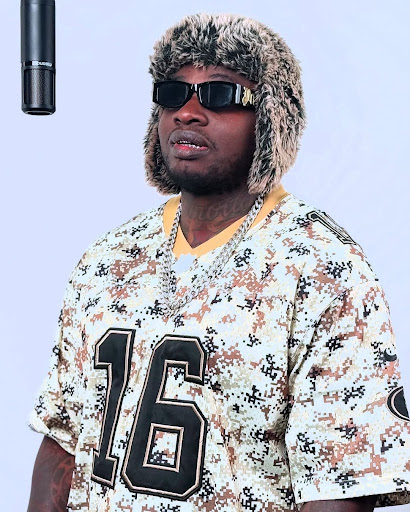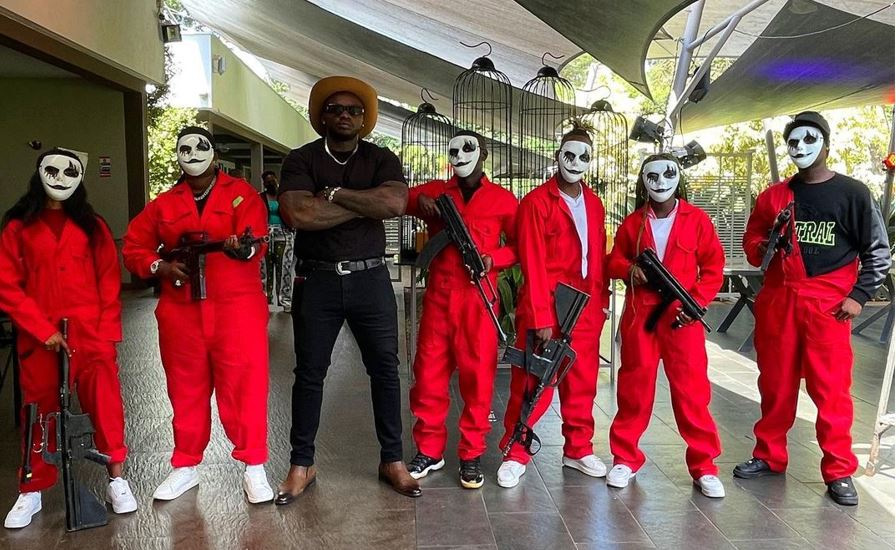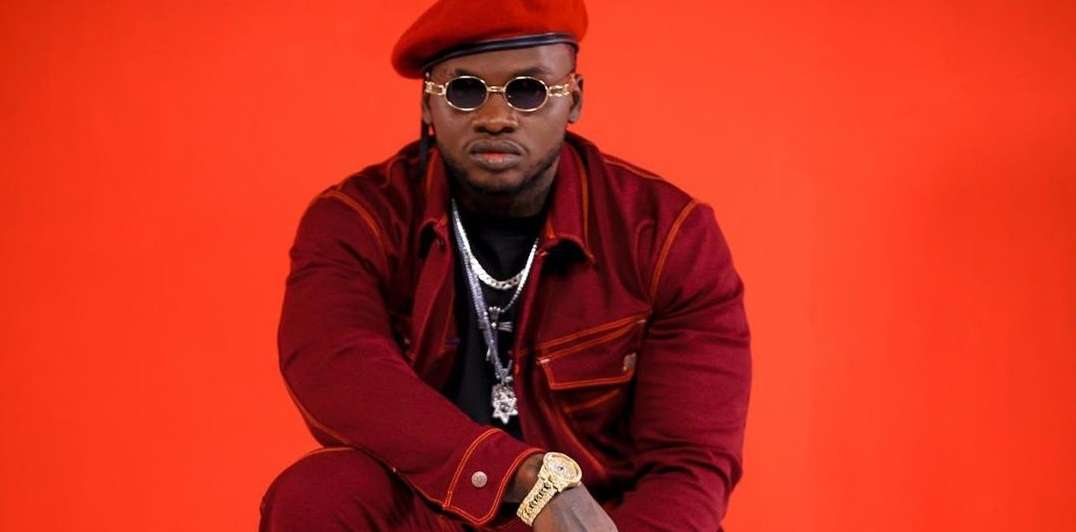Khaligraph Jones introduced himself with a slender build, razor-sharp lyrics, a booming flow, and unshakable drive—announcing his arrival not just as a rapper, but as a force destined to redefine Kenyan hip-hop.

The musical evolution of Khaligraph Jones has been a combination of grit, hate and acceptance. As a hip-hop artist, his presence and appearance was often a point of conversation. His rebel spirit and undeniable talent catapulted the mega artist to where he is now. His rebel spirit and undeniable talent catapulted the mega artist to where he is now. With five albums to his name, Khaligraph Jones has undisputedly been a cornerstone in the music industry as a large.
Khaligraph Jones’ first came into public limelight with WAPI (Words And Pictures) a project whose purpose was to amplify the unfiltered voices driving Kenya’s hip-hop culture. Long before the stadium shows, brand endorsements, and heavyweight status, Khaligraph Jones introduced himself at the WAPI stage armed only with a slender build, razor-sharp lyrics, a booming flow, and unshakable drive as he went against Gadi Moja.
Releasing his mixtape “The Takeover,” a year after his 2008 WAPI performance, the project was an imminent foreshadow of his rap status. Jones introduced himself with The Take Over—a gritty, uncompromising mixtape that marked the arrival of a future king. The project captures Khaligraph in his most unfiltered form: lean-bodied, sharp-tongued, and fiercely determined. Each track brims with raw energy and lyrical ambition, as he spits punchy bars over boom bap-heavy beats, wielding his flow like a weapon. There’s no gloss here—just a hungry emcee putting his skills on the line, fueled by the urgency of someone who knows exactly how much he has to prove.
The Take Over plays like a street sermon and lyrical workout rolled into one, blending braggadocio with glimpses into the grit of Nairobi life. It’s a portrait of an artist in motion—finding his voice, sharpening his craft, and daring the industry to pay attention. In retrospect, the mixtape feels prophetic: a rough-cut gem that hinted at the empire Khaligraph would go on to build. If you want to understand where his journey began, this is the origin story—raw, relentless, and unapologetically real.
Before finally dropping his long-anticipated debut album, “Testimony 1990,” Khaligraph Jones took a deliberate nine-year journey that was anything but quiet. During this period, he released over a dozen singles and collaborations that laid the foundation for his mainstream breakthrough. Tracks like “Yego” (2015), which now has over 3 million views on YouTube, and the gritty anthem “Mazishi” (2016), with over 7 million streams, showcased his lyrical prowess, sharp storytelling, and unmistakable delivery. These hits didn’t just mark milestones in his career, they redefined what commercial success could look like for a Kenyan rapper.


But Khaligraph wasn’t just focused on building his own legacy. Behind the scenes, he was actively cultivating the next generation of talent. Through his influential Khali Cartel Presents cyphers, now a staple in the Kenyan hip-hop calendar, he’s created a platform that merges competitive lyricism with visual storytelling. The series has introduced and elevated several emerging acts, including Wakadinali, Aress 66, Motif, and Breeder LW, many of whom have since gone on to headline festivals, land brand endorsements, and chart on local platforms. With each cypher amassing hundreds of thousands of views, Khali Cartel has become more than a series, it’s a talent incubator and cultural benchmark.

Khaligraph Jones’s debut album Testimony 1990, was more of a personal and lyrical introduction to the rapper’s world, rooted in Kayole, (or as he sarcastically calls it United Kayole), and told through a gritty lens of survival, ambition, and introspection. Across 17 tracks, he explored mental health, hustle culture, betrayal, and love, all delivered with razor-sharp lyricism and a hunger that could not be ignored. Songs like “Mazishi,” “Gwala” (featuring YCEE), and “Superwoman” (with Mr Eazi) struck a balance between vulnerability and bravado, laying the foundation for what would become a continental force. In contrast, “Invisible Currency,” released in 2022, is the sound of an artist who has arrived, and is looking outward. While equally 17 tracks long, the album feels more expansive, more global in ambition. It pulls in collaborators from across Africa and the diaspora—Alikiba, Dax, Rudeboy, Scar Mkadinali, Mejja—infusing drill, bongo, gospel, and afrobeats into his hip-hop base. Thematically, it moves beyond personal testimony into reflections on fame, legacy, and cultural pride. While Testimony 1990 broke ground with over 83,000 streams in its first week, Invisible Currency shattered expectations, crossing a million streams in under a week and landing Khaligraph on a billboard in Times Square. If the first album was about proving himself, the second is a flex in earned currency—both musical and symbolic. Together, they don’t just chart his evolution; they document the rise of a Kenyan rap icon with continental reach and global intent.
Following the global momentum of Invisible Currency in 2022, Khaligraph Jones re-emerged in 2025 with a new creative vision less about domination, more about legacy. He began the year with “The Book of Jones 1st Chapter,” a deeply introspective and mature body of work that marked a turning point in his discography. Framed as the first installment of a personal gospel, the album explores themes of fatherhood, faith, accountability, betrayal, and the burden of influence. Tracks like “True Story,” “Father Figure,” and “No Peace in Fame” paint a vivid portrait of an artist reckoning with success while staying rooted in purpose. Musically, the project leans into stripped-back production soulful samples, ambient textures, gospel-tinged harmonies that foreground his lyricism and allow his reflections to cut through with clarity. It’s Khaligraph at his most vulnerable, speaking less to hype and more to history.
This 10-track opus arrives as an intimate reflection on Khaligraph’s journey both as an artist and a man. From the jump, “Risk” featuring Nyashinski sets the tone, blending Khaligraph’s heavyweight bars with Nyash’s smooth, melodic hook to explore the cost of ambition and the sacrifices that come with chasing greatness. In “Family”, featuring Timmy Blanco, he trades bravado for vulnerability, spitting heartfelt verses affirming love, responsibility, and gratitude; the track became so personal he performed it for his kids at home. Songs like “The Purge” and “On the Real” dive into industry politics and self-examination, while “Halfway” with Mordecai Dex weaves soulful introspection into narratives about balance and faith . Tracks like “OG Status” and the energetic “Khali Cartel 5” cypher reaffirm his lyrical dominance and role as a cultural curator. From rich production and tight features to the emotional resonance of tracks like “Crashout” with Teya Ticasso and cross-continental flair on “Favour” (feat. Falz), this album positions Khaligraph as introspective yet unashamedly assertive. It debuted at No. 3 on iTunes Kenya standing tall among global icons.
Just weeks later, Khaligraph surprises fans with a raw compilation of vault-level tracks. “The Lost Tapes” a less polished, more authentic, a curated archive of unreleased freestyles, deep cuts, and archival gems that showcase his lyrical appetite and growth outside major release cycles. These tapes bring back the cadence of cypher days, experimental flows, and unreleased verses that reflect the hunger of his early career. Far from filler, the collection acts as both mirror and contrast to The Book of Jones one intimate, the other untamed, each offering a unique lens into the man behind the mic.
Together, these two projects mark a pivotal year. The Book of Jones documents Khaligraph’s maturity and his roles as father, cultural commentator, and sonic architect. Then The Lost Tapes flips the script: a raw, visceral reminder of the bars-first MC who rose from Kayole’s streets. Between family, faith, finesse, and flipped cadences, this pair cements Khaligraph Jones not just as a rapper, but as a chronicler of growth, pain and progression, legacy and lyricism.
In tracing Khaligraph Jones’s discography, one witnesses more than just the rise of a rapper, it’s the unfolding of a legacy in real time. From the gritty introspections of “Testimony 1990“, to the continent-spanning ambition of “Invisible Currency“, and into the soul-baring pages of “The Book of Jones and The Lost Tapes“, Khaligraph has proven that growth and greatness aren’t opposing forces they are intertwined. His catalog isn’t just a collection of projects; it’s a chronicle of a man constantly evolving, refusing to plateau, and redefining what African hip-hop can sound and feel like. Whether mentoring a new generation through his cyphers or reflecting on fatherhood, trauma, and triumph, the “OG” from Kayole continues to command not just the mic, but the moment. In a scene often shaped by noise and speed, Khaligraph stands as a reminder that some voices echo louder because they are grounded in truth—and he’s only just begun writing his final chapters.

